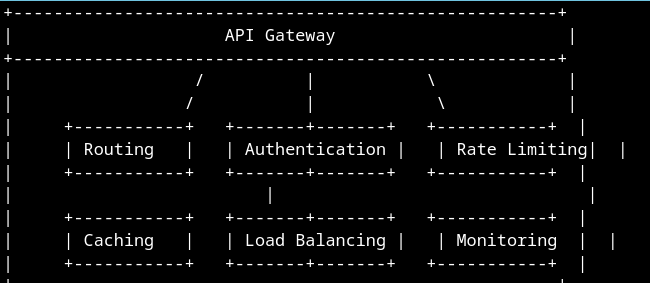
API Gateways are essential components in modern system architectures, especially in microservices environments. They act as intermediaries between clients and backend services, providing a single entry point for API interactions. In this article, we will explore what an API Gateway is, how it works, and how it differs from a load balancer.
What is an API Gateway?
Imagine walking into a busy hotel lobby. Instead of figuring out which department you need to visit, you approach the reception desk, and the receptionist directs you to the right place – whether it’s room booking, housekeeping, or the restaurant. An API Gateway works similarly – it acts as the central entry point that directs client requests to the appropriate backend service or microservice.
How Does an API Gateway Work?
The API Gateway sits between the client (like a mobile app or web app) and the backend services. It performs various tasks, including:
- Routing: Directs requests to the right microservice.
- Authentication: Verifies user credentials.
- Rate Limiting: Controls the number of requests a client can make.
- Request Transformation: Modifies the request format if needed.
- Caching: Stores frequent responses to reduce backend load.
- Load Balancing: Distributes requests among multiple instances of a service.
- Monitoring: Tracks performance and logs data.
Real-World Example:
Imagine you have a food delivery app. The client sends a request to view the menu, place an order, and track delivery. The API Gateway:
- Routes the menu request to the menu service.
- Forwards the order request to the order processing service.
- Sends the tracking request to the logistics service.
- Authenticates the user before granting access.
Difference Between API Gateway and Load Balancer
While both API Gateways and Load Balancers manage traffic, they serve different purposes.
Aspect API Gateway Load Balancer Primary Function Route API requests to microservices Distribute traffic across multiple servers Focus API management and request transformation Traffic distribution for high availability Request Handling API-specific (URL-based) Generic (IP-based) Typical Use Case Microservices Server load distribution
Fun Analogy:
Think of it this way:
- The API Gateway is like a concierge in a hotel who directs you to the right department (housekeeping, restaurant, room booking).
- The Load Balancer is like the hotel manager who ensures that guests are evenly distributed among rooms to avoid overcrowding.
Why Use an API Gateway?
- Centralized API Management:
- Enhanced Security:
- Service Abstraction:
- Improved Performance:
Final Thoughts
API Gateways play a vital role in modern application architectures, especially in microservices. By consolidating routing, security, and performance management, they help simplify client interactions while maintaining robust backend management. Understanding the difference between API Gateways and Load Balancers helps you design scalable, maintainable systems.
🚀 System Design for TPM Series – Part 7: Introduction to API Gateway
Discover why API Gateways are crucial for modern applications and how they differ from traditional load balancers.
Read here:
#SystemDesign #APIGateway #LoadBalancing #Microservices #TPM #TechnicalProductManager #ProductOwner #ProgramManager #CareerGrowth #TechExplained #JobSeeker #OpenToWork #ProductManagement #TechLeadership #CareerOpportunities #JobSearch #OpenForOpportunities #TechCareers #ProductLeadership
